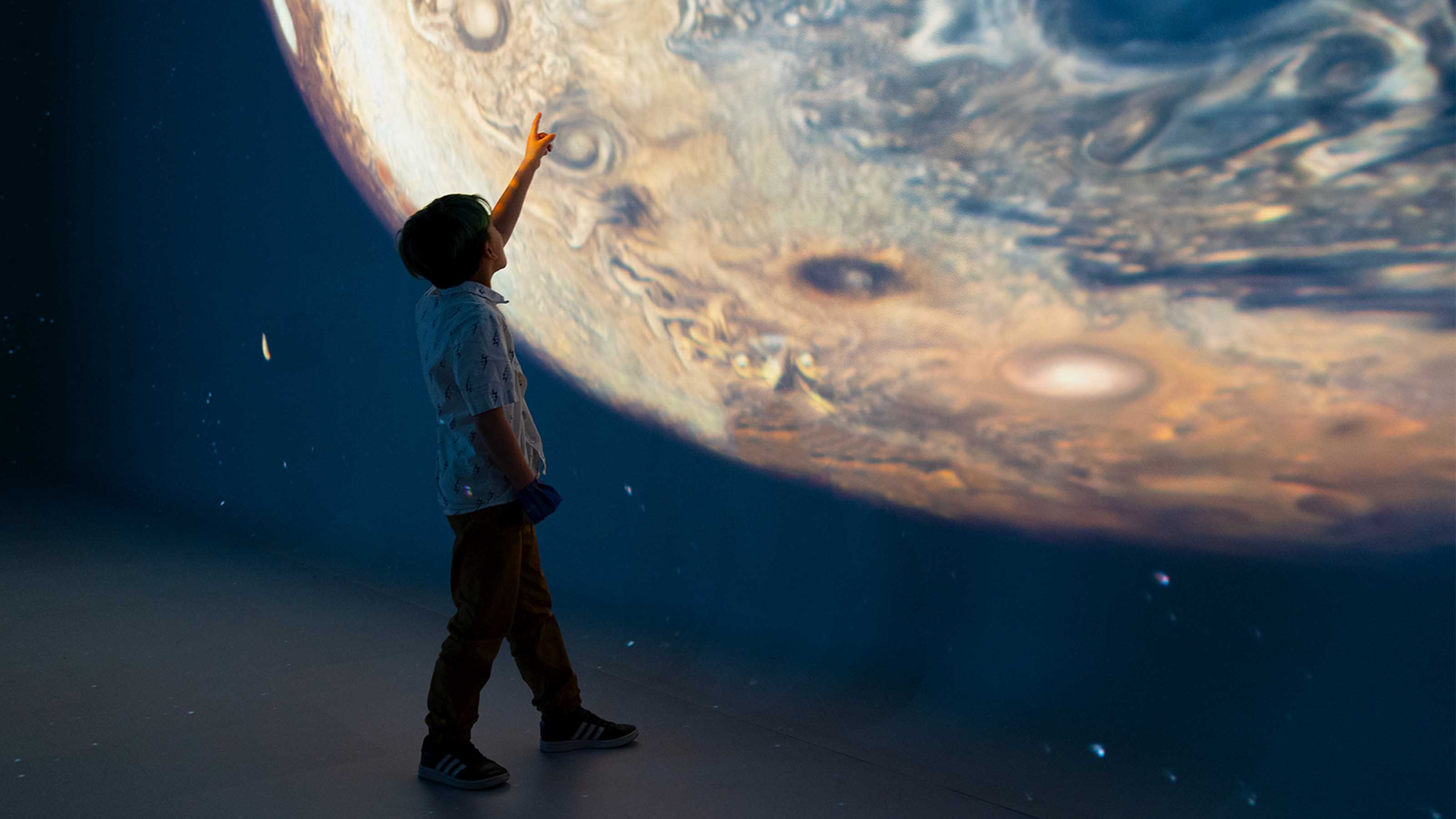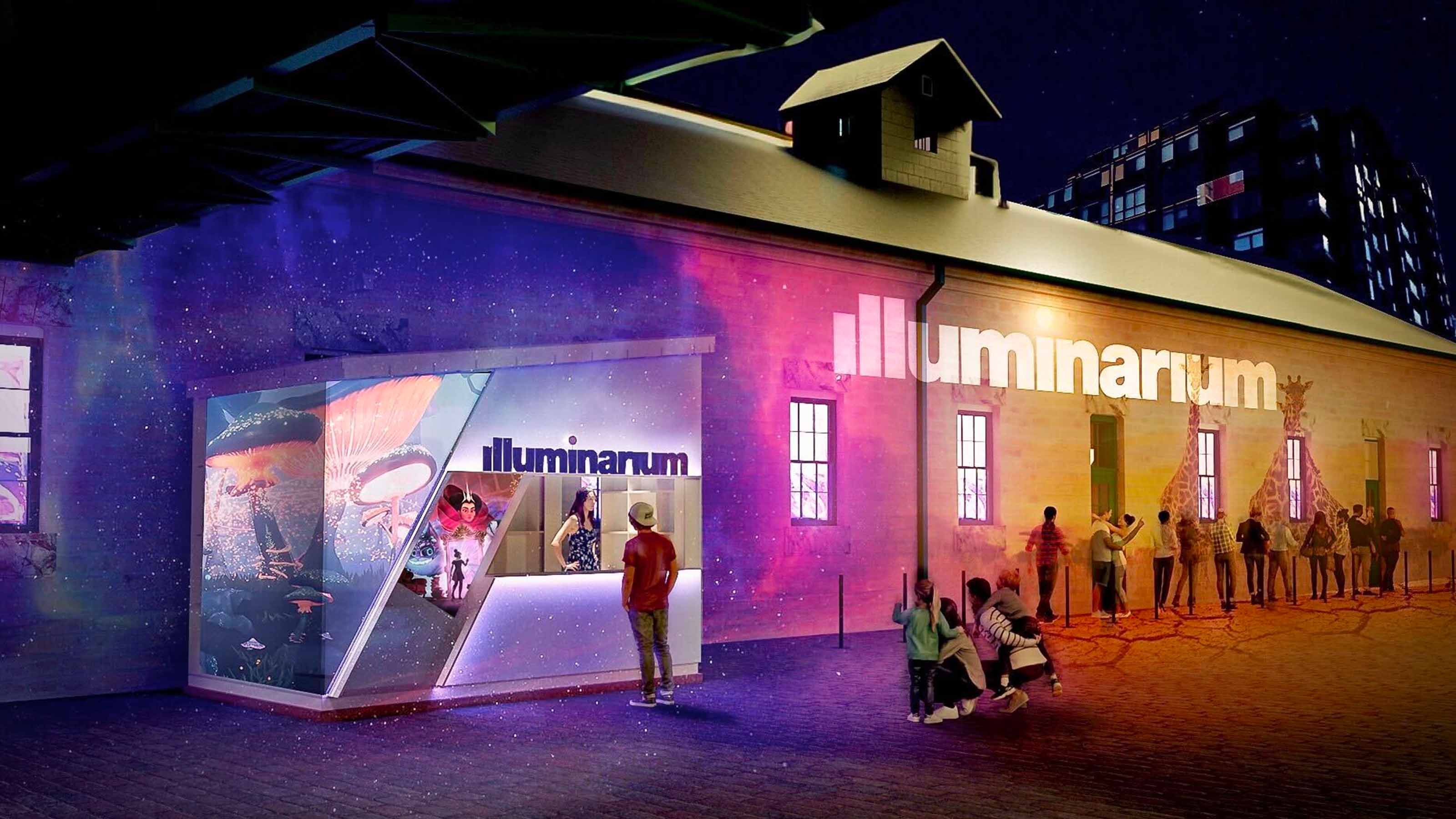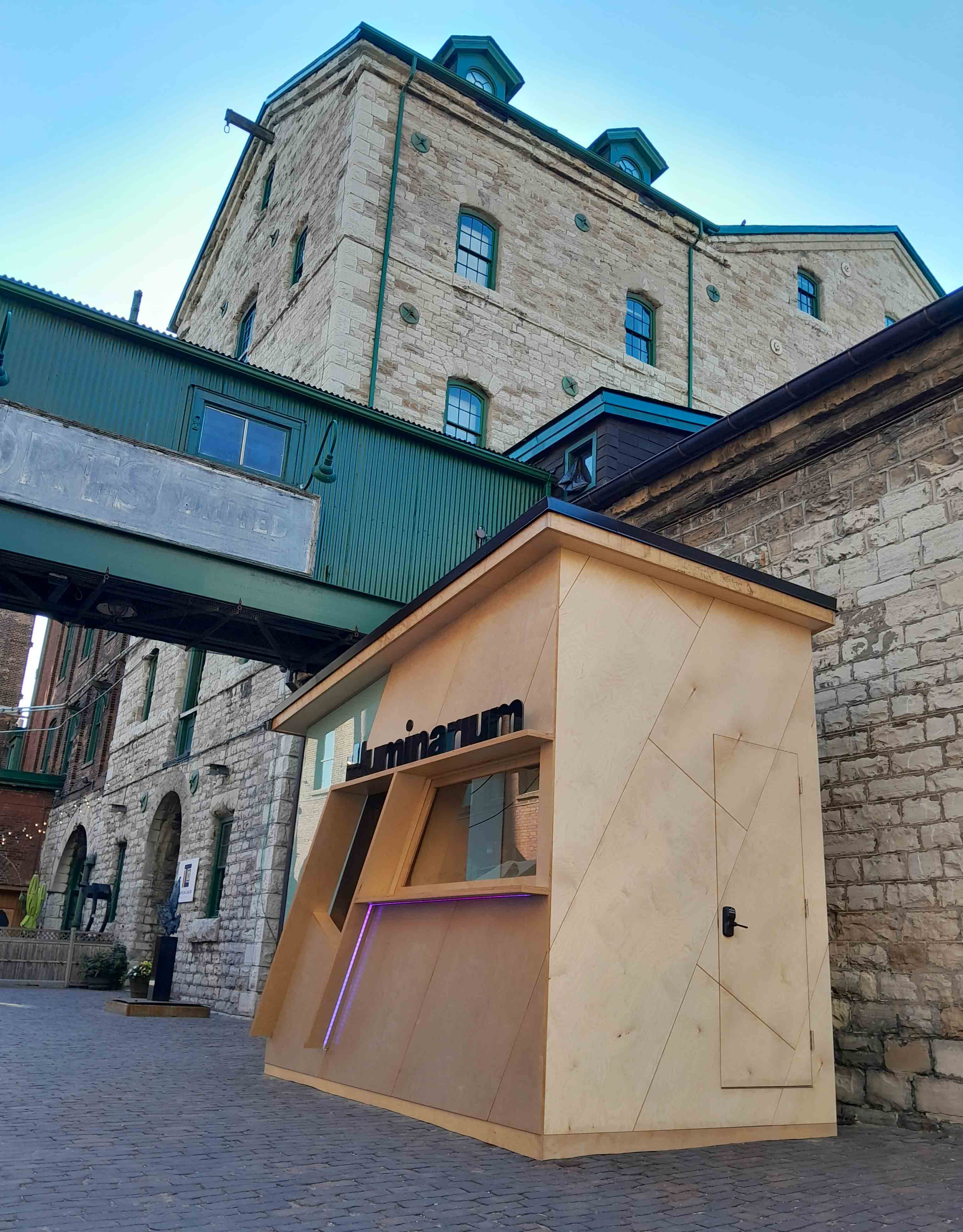Take a Tour of Toronto's Illuminarium
Pro AV technology drives the immersive 'tour of the universe.'

The term "mind-blowing" is one of the more overused adjectives in the English language. But when it comes to the immersive wraparound video "tour of the universe" offered by Toronto’s Illuminarium at the Distillery District, no other term will do.
Housed inside a 13,500 square foot 19th-century stone building in the former Gooderham & Worts distillery, “Space: A Journey to the Moon & Beyond” is a tribute to the breathtaking beauty of creative/interactive video story-telling backed by stirring music and sound effects, made possible by multiple Christie RGB pure laser projectors working together. This show and others planned for this site are being produced by Illuminarium Experiences in partnership with Toronto-based Secret Location. Illuminarium Experiences has opened similar immersive facilities in Atlanta and Las Vegas.
Start Your Journey
From the outside, the Toronto Illuminarium location looks like an historic, one-story extension connected to a multi-story white stone building dating back to the 1860s. The site itself, which was once home to the Gooderham & Worts distillery, is home to about 30 stone and brick heritage buildings that have been repurposed but retain their Victorian character.
Everything changes when you enter the Illuminarium. A ramp illuminated by pale LED light strips takes you into a large, tall holding room. Inside, you find yourself looking at a Saturn 5 moon rocket steaming on its launchpad in the pre-dawn light. This is a 3D video experience: Glance around the room, and the full-motion video creates a complete wraparound experience, almost as if you were actually there, in Florida, at that point in time 50 years ago.

From here, the show host takes you and the other visitors into a very large, L-shaped room. The walls and floor of this room are all one interconnected, interactive video experience that takes you from the moon to the stars. You begin alongside the moon, as a seemingly full-sized Apollo spacecraft attached to its lunar module floats by. Thanks to the video’s pristine 4K resolution and full range of clear, full colors, the entire experience seems very real.
[Christie HS Series Illuminates Projection Mapping at Tuxtla Cathedral]
A daily selection of the top stories for AV integrators, resellers and consultants. Sign up below.
This is just the beginning of your trip to the moon and beyond. Along the way, you’ll stand on the lunar surface and watch astronauts posing for pictures. They are life-sized, so you can stand beside them and snap a selfie. Your feet will even appear to kick up dust and leave footprints on the Moon’s surface as you walk through the room.
From here, you’ll see buildings established on the moon for human explorers, see our solar system’s planets in huge and stunning detail, visit the constellations with their accompanying Zodiac signs, and encounter asteroids and break them into pieces by stomping on them on the floor as they whiz by (the kids love doing this). There’s also time to fly through a nebula and see other galaxies as they surround you on all sides. Your journey concludes by watching various historic NASA video clips as they cover the walls—always immersive and always backed by clear, all-encompassing sound.
Making the Magic

“The Illuminarium experience reminds me very much of virtual reality, but it's not such an isolated medium, it's a shareable medium,” said Ryan Andal, president and founder of Secret Location and a partner in Illuminarium Experiences. “It's meant for big groups of people, even though it provides the same level of storytelling, immersion, and empathy found in VR.”
The visual power of “Space: A Journey to the Moon & Beyond” is made possible by Christie laser projectors strategically located throughout the space. Six Christie M 4K25 RGB 3-DLP projectors, which deliver 25,300 lumens of brightness, are used in the holding room for the immersive view of the Saturn V rocket. In the L-shaped room, 20 36,500-lumen Christie Griffyn 4K35-RGB 3-DLP projectors are used for the 30-minute main video, which runs on a loop.
“We did a very detailed 3D Lidar [light detection and ranging] scan of the building in order to provide a detailed projection study for our Christie Professional Services team,” said Joseph Conover, Christie’s director of immersive entertainment and live events. “This told us how to choose the best projector locations and how to set up our lensing to bend the images around the walls and create a seamless video experience.”
Audio through the space is provided by 26 surround-sound speakers mounted through the space, 17 in-wall speakers, and six dual subwoofers between the two rooms. Meanwhile, the interactive portions are managed using Unreal Engine software, which is commonly used to render full-motion video games. To tell the show’s servers when to react, wall and ceiling-mounted Lidar cameras create a real-time, 3D tracking map. This allows the show operator to see exactly where each person in the L-shaped room is and what they are doing.
Mirror, Mirror
Given that this is a 19th century industrial building, the L-shaped room has vertical support pillars cutting into its space. To mask these, Secret Location covered them with mirrors. This decision, coupled with artful choices regarding the locations of the video projectors, makes the pillars effectively disappear. If you look hard, you will notice the video reflecting off them--but in a big room filled with video everywhere, they don’t stand out. In fact, the eye ignores them.
[Keeping the Faith: Architectural challenges of Concordia Lutheran Church]
“From a visual perspective, it looks great,” Andal said. “However, having mirrored pillars does create challenges in terms of our Lidar technology and any of the interactivity that you have on the floors. Those are things that we have to take into account, along with masking any projectors whose light could hit those mirrors directly.”
Of these two challenges, it was the projector placement that was the most daunting. “Our Lidar cameras have quite broad coverage, so there was never really an issue with those overall,” said Andal. “But since the Christie projectors have fixed lenses that we couldn’t zoom in and out, we had to physically move these projectors into the proper places based on throw distances and those sort of considerations. This is why we spent a lot of time doing a projector study upfront to make sure that we would get full coverage and make sure that the placement was correct. Obviously, over the course of the actual build, there was some fiddling around to move things here and there due to overhead hanging pipes and other things that we didn't account for that took away from some of the projection, but for the most part it was good.”

It took a tremendous amount of planning and preparation to make a 21st century immersive AV experience like “Space: A Journey to the Moon & Beyond” work inside a converted 19th century distillery, which still houses many of the huge tanks and pipes (though out of view of the paying customers). But Secret Location, Illuminarium Experiences, and Christie did the job right. Only those who know where to look for the seams can spot them. To the paying public, the physical space disappears as the universe swirls around them.
“I believe in mixing new architecture with old, as has been done so successfully by the Louvre museum in Paris,” Andal said. “Toronto also has that history of mixing old and new, which I embrace. It's quite a sight to see that duality in action at the Toronto Illuminarium. I quite like it.”
Modern Construction Challenges in an Historic Space

Converting a 19th century distillery into an immersive video display space was no easy matter. “We've basically had to build the shell inside this historic building, and curved the flooring so that the wall and the floor transition is more or less seamless,” said Secret Location's Ryan Andal.
Having walked the crawl spaces above the Illuminarium’s display rooms, I can personally say that there was much more to the job than this. Here’s the problem: Because the buildings within the Distillery Historic District have been government-designated as "heritage properties," Secret Location could not knock down walls or add extensive amounts of infrastructure. Instead, they had to minimize the number of attachments between their equipment and the building’s dusty 19th century rafters—and believe me, it is dusty and dark up there—and install their equipment with minimal impact on the building’s historic interior.
The rickety nature of the interior can have interesting consequences. For example, the old catwalk that allows access to the overhead lighting, projectors, and speakers is prone to shake when you walk on it. This is why the catwalk is used as little as possible during showtimes, as the vibrations can throw the projected video out of alignment. The suspended HVAC system also causes vibrations, which the equipment installers have compensated for as best as they can.
[How to Collaborate on Collaboration]
Then there’s the space and support limits of the structure. Because the Toronto Illuminarium relies on 14,000 pounds of servers to run its shows, the computer banks had to be housed in the Mezzanine building across from the main display space. Doing so required reinforcing the room's floor with steel beams, plus adding massive amounts of cooling to keep the servers from overheating.
Here’s a weird point: Because the original operators of the distillery didn’t want to walk outside during snowy Toronto winters, they built an elevated, enclosed walkway between the main building and the Mezzanine high above the ground. With its cramped space and small windows, the walkway is still used today as the pathway for the cables from the servers to the projectors and speakers.
All told, the backstage areas of the Toronto Illuminarium are somewhat strange and antiquated, with much of the original distillery equipment still in place!
James Careless is an award-winning freelance journalist with extensive experience in audio-visual equipment, AV system design, and AV integration. His credits include numerous articles for Systems Contractor News, AV Technology, Radio World, and TV Tech, among others. Careless comes from a broadcasting background, with credits at CBC Radio, NPR, and NBC News. He currently co-produces/co-hosts the CDR Radio podcast, which covers the Canadian defense industry. Careless is a two-time winner of the PBI Media Award for Excellence.

